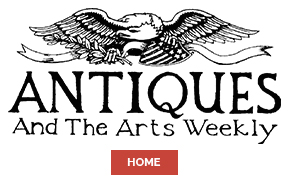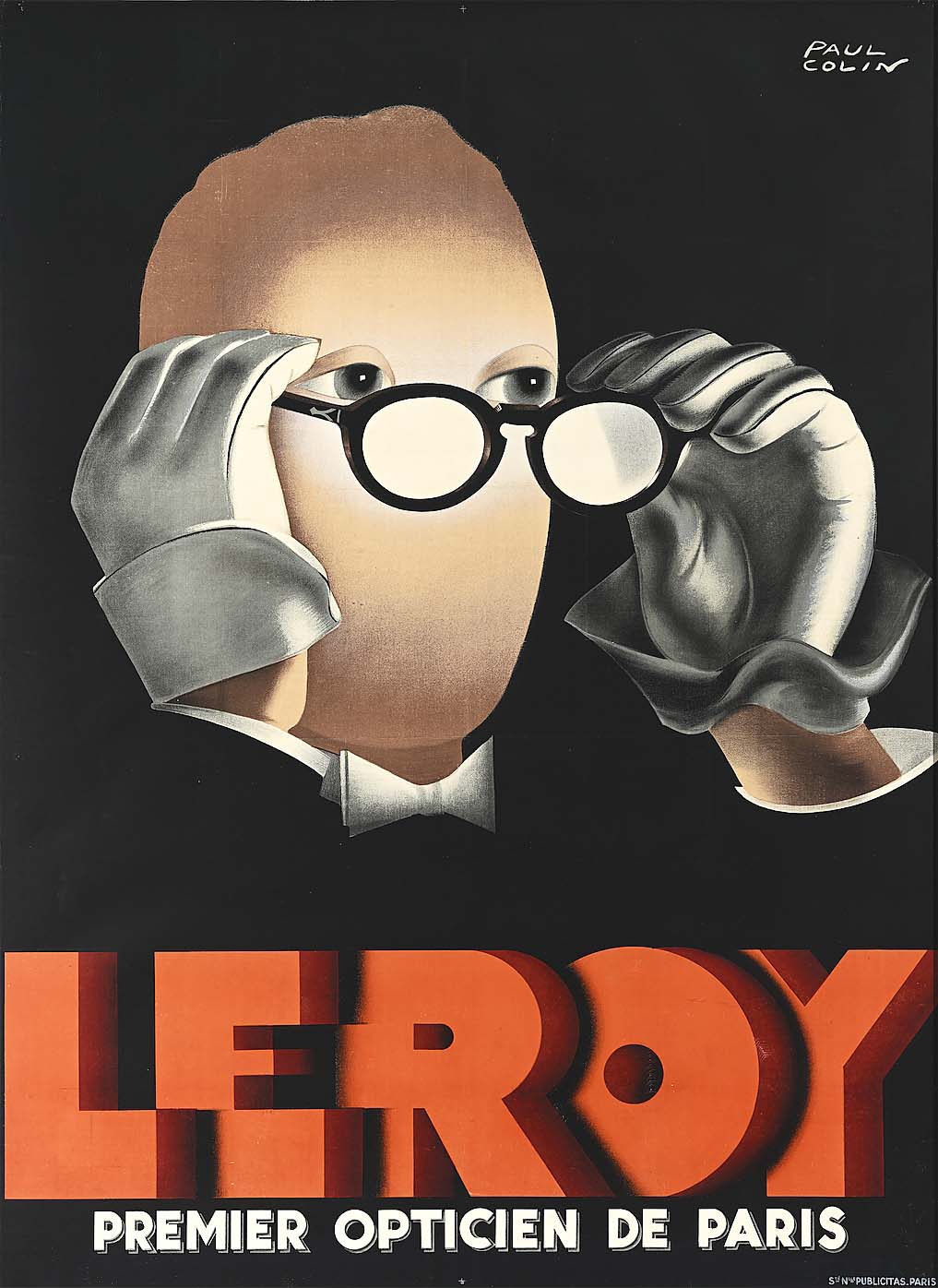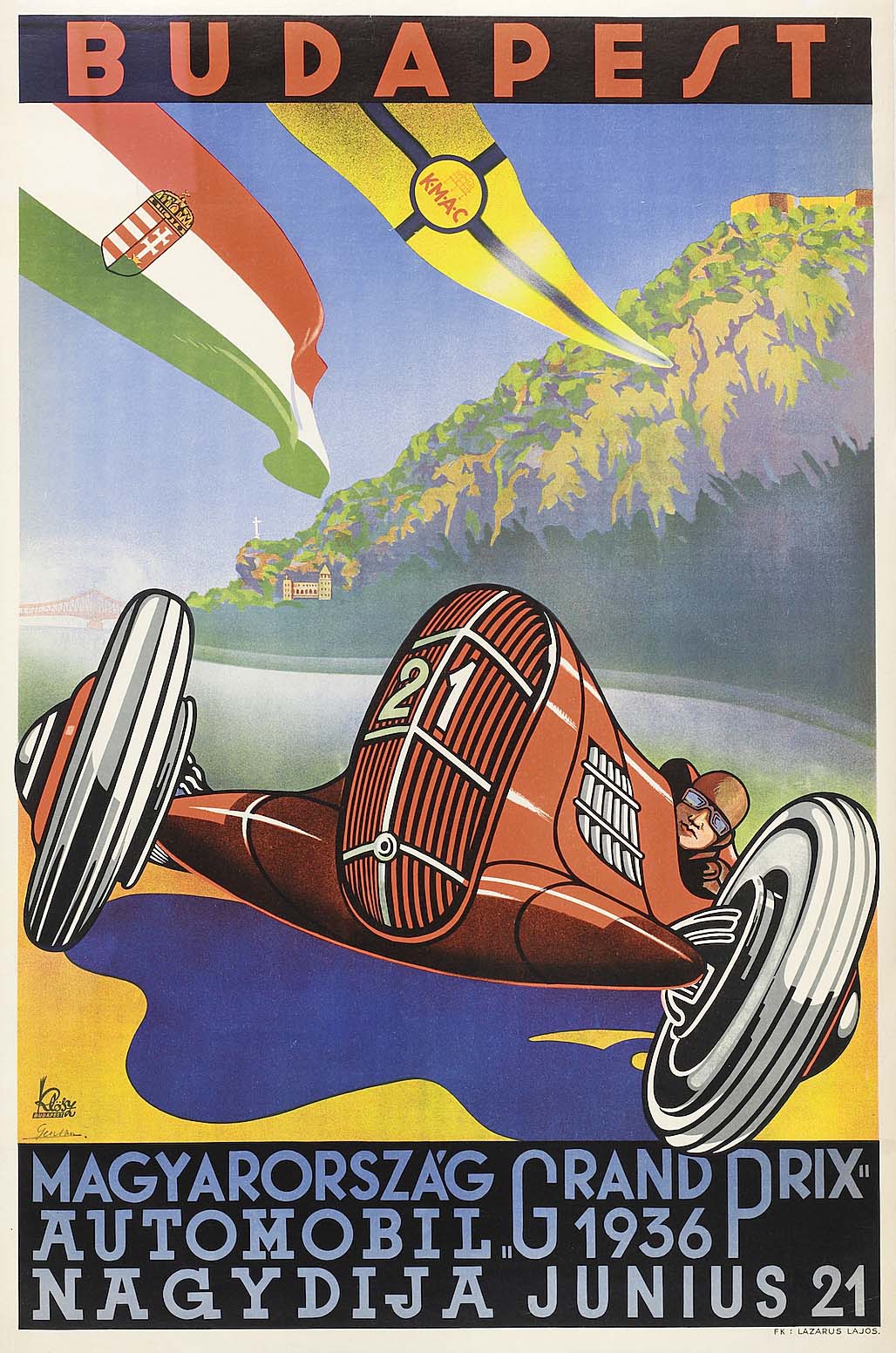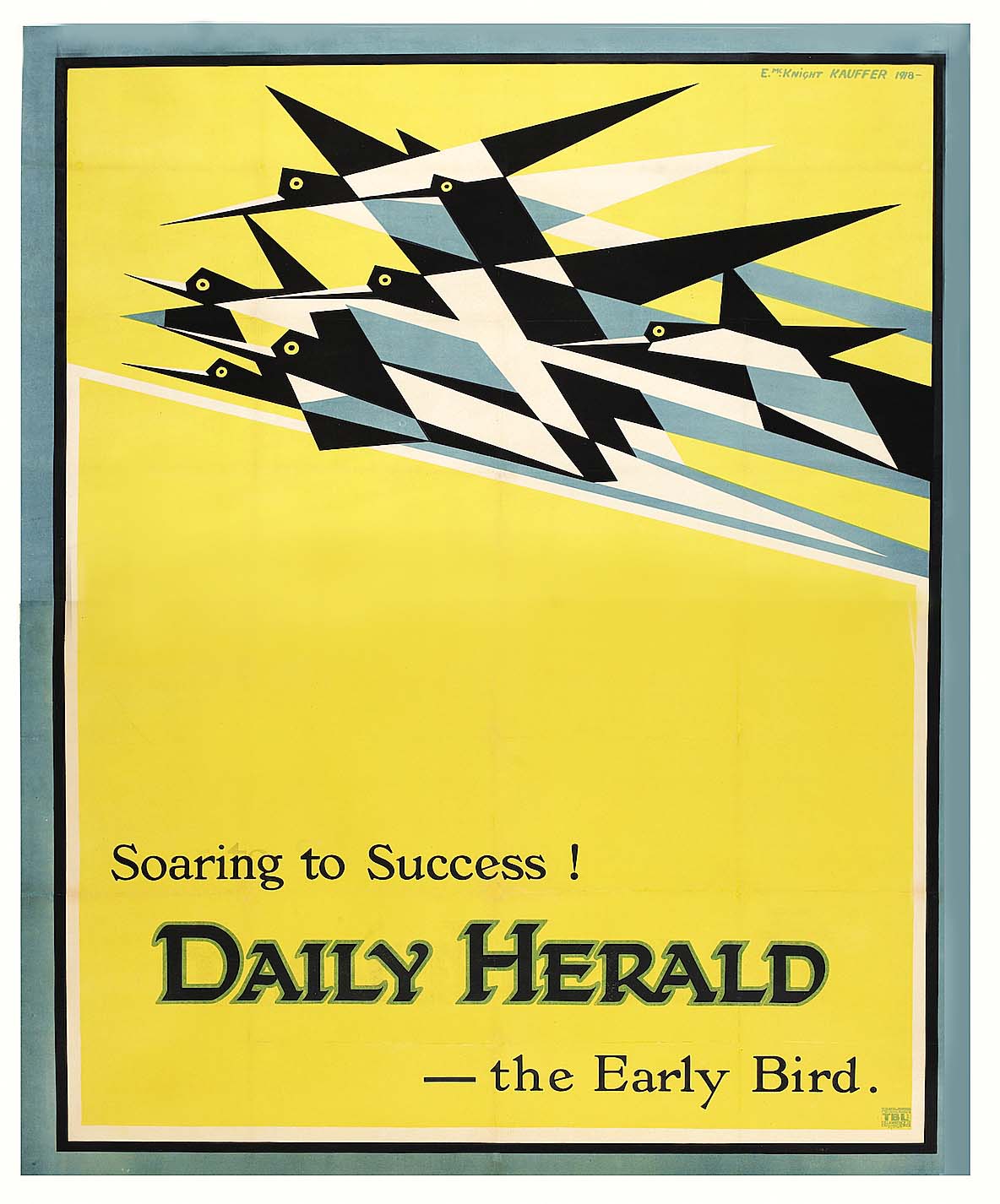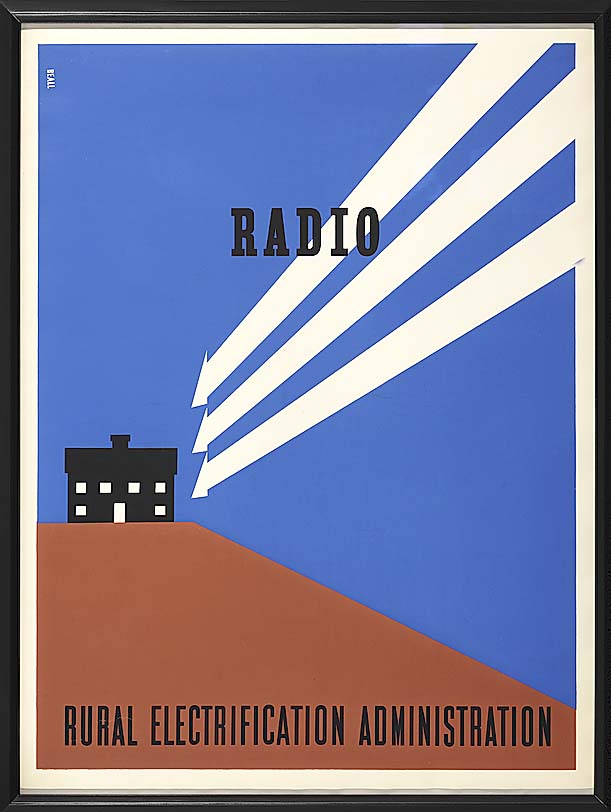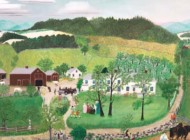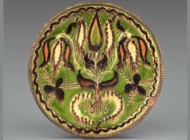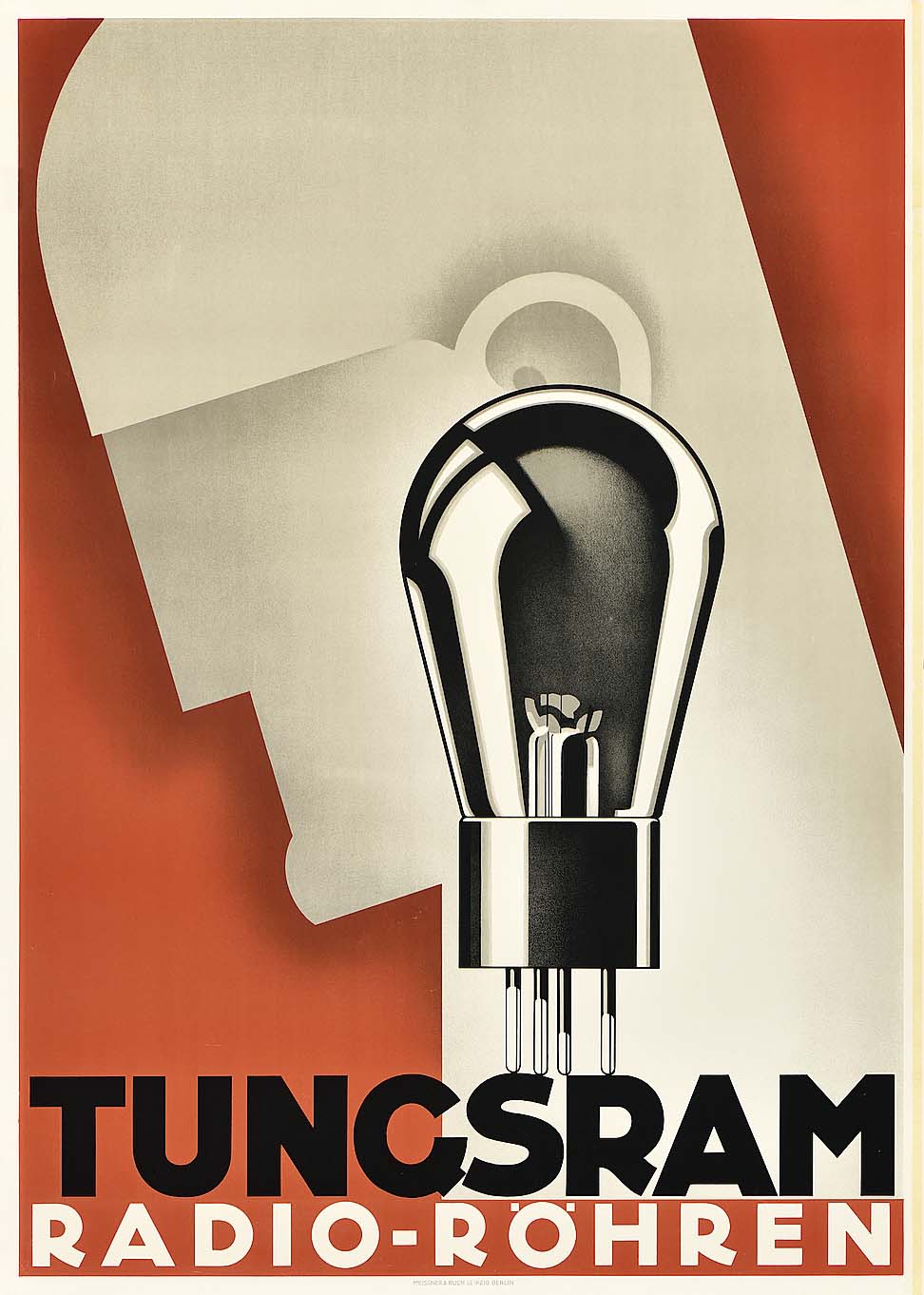
“Tungsram Radio-Röhren,” 1933, lithograph, 46¾ by 33½ inches. Collection of the Crouse Family, courtesy of Poster House.
By Andrea Valluzzo
SARASOTA, FLA. — Long before a TikTok video or Tweet would stop people mid-scroll on their phones, immediately grabbing their attention, posters had the same power. Some of the most bold and eye-catching posters were created during the Art Deco era, which kicked off a century ago with the 1925 Exposition Internationale des Arts Décoratifs et Industriels Modernes in Paris.
Advertising a wide array of products from cigarettes, alcohol and food to local businesses, entertainment hotspots and even travel destinations, these 1920s and early 1930s posters were designed to be visually striking, instantly commanding attention from people passing by on busy streets, in much the same manner promotional social media posts aim to do today. Both forms of advertising are masterful in not only selling products but enviable lifestyles.
While intended to be ephemeral with a short-lived lifespan, surviving Art Deco posters, made circa 1925-35, have become quite collectible and desired for their visual language and historic importance.
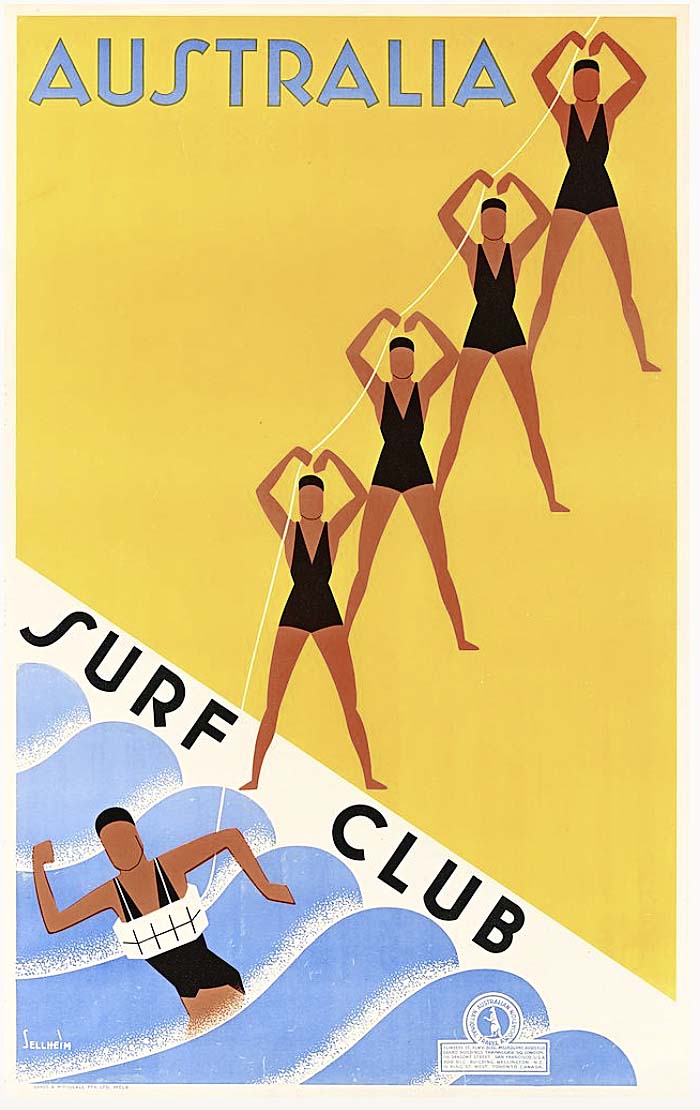
“Australia: Surf Club” by Gert Sellheim (German Australian, 1901-1970), 1936, lithograph, 40½ by 25½ inches. Collection of the Crouse Family, courtesy of Poster House.
Surveying this important decade, which also saw many changes in technology, commerce, culture and visual arts, is a new exhibition at the Sarasota Art Museum of Ringling College of Art and Design. Highlighting 100 posters from the William W. Crouse Collection, “Art Deco: The Golden Age of Illustration” is on view through March 29. Though there were many anonymous makers, well-known artists designing these posters include the likes of Leonetto Cappiello, Jean Carlu, A.M. Cassandre, Paul Colin, Jules Courvoisier, Edward McKnight Kauffer and Roger de Valerio.
The exhibition is organized into nine sections with such apt names as “Wings of Modernity,” featuring aviation-themed posters; “Game On,” showcasing posters from major sports competitions like the Grand Prix, the Davis Cup and the Olympics; and “On the Right Track,” where railroad companies commissioned graphic designers to create posters selling railway travel and iconic tourist destinations.
“Before the age of television and digital media, printed graphic posters seduced viewers with eye-catching advertisements. These posters offered images of longed-for convenience, indulgent tastes, novel entertainments and solutions to troubles consumers never knew they had,” said the exhibition’s curator, Rangsook Yoon, senior curator at Sarasota Art Museum. “They were selling desires, serving as visual billboards of what living modernity would look like. These stunning posters highlight Art Deco as a style and movement that aligned with the modernity in the turbulent early Twentieth Century.”
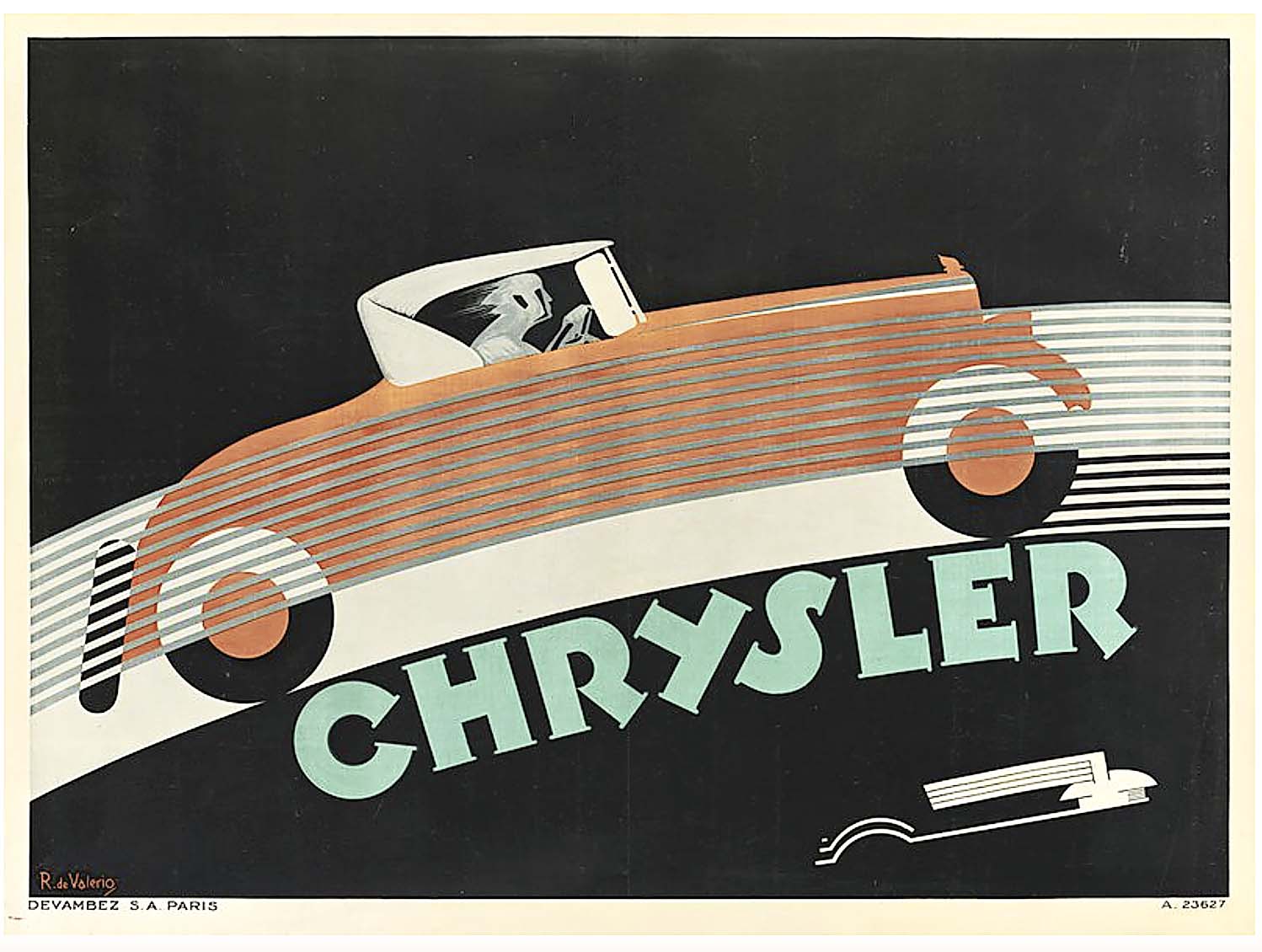
“Chrysler” by Roger de Valerio (French, 1886-1951), 1930, lithograph, 47 by 62 inches. Collection of the Crouse Family, courtesy of Poster House.
While perhaps best known for focusing on contemporary art, the museum mounted this exhibition not only to serve its community’s interests but also to showcase connections between modern art and well-known artists from the past to contextualize this era and its visual vocabulary.
As an art historian, Yoon was particularly interested in the narratives and connections during this time. “This was the time when these posters started to take shape and also when consumer culture started to shift with industrialization and products moving across national borders,” she said, noting a variety of social, cultural and economic factors coming together made this time period notable. A goal of hers with this exhibition went well beyond showing off the posters’ artistic merit but to explore historic narratives and share some of the stories these posters tell.
Before the Roaring Twenties gave way to the Great Depression and eventually World War II, there was much optimism for the future and progress amid technological advancements. The age of industrialization was taking hold, changing how products were made. Among the industries seeing the start of mass production was the automotive industry. Cars were becoming more affordable to the middle class and symbolized freedom and status. Posters like Roger de Valerio’s sleek 1930 poster, “Chrysler,” literally paint a picture of how fast cars can be as well as how fast the modern world was moving. The artist’s use of horizontal lines added to the illusion the car is racing across the screen, echoed by streaking lines behind the driver’s head.
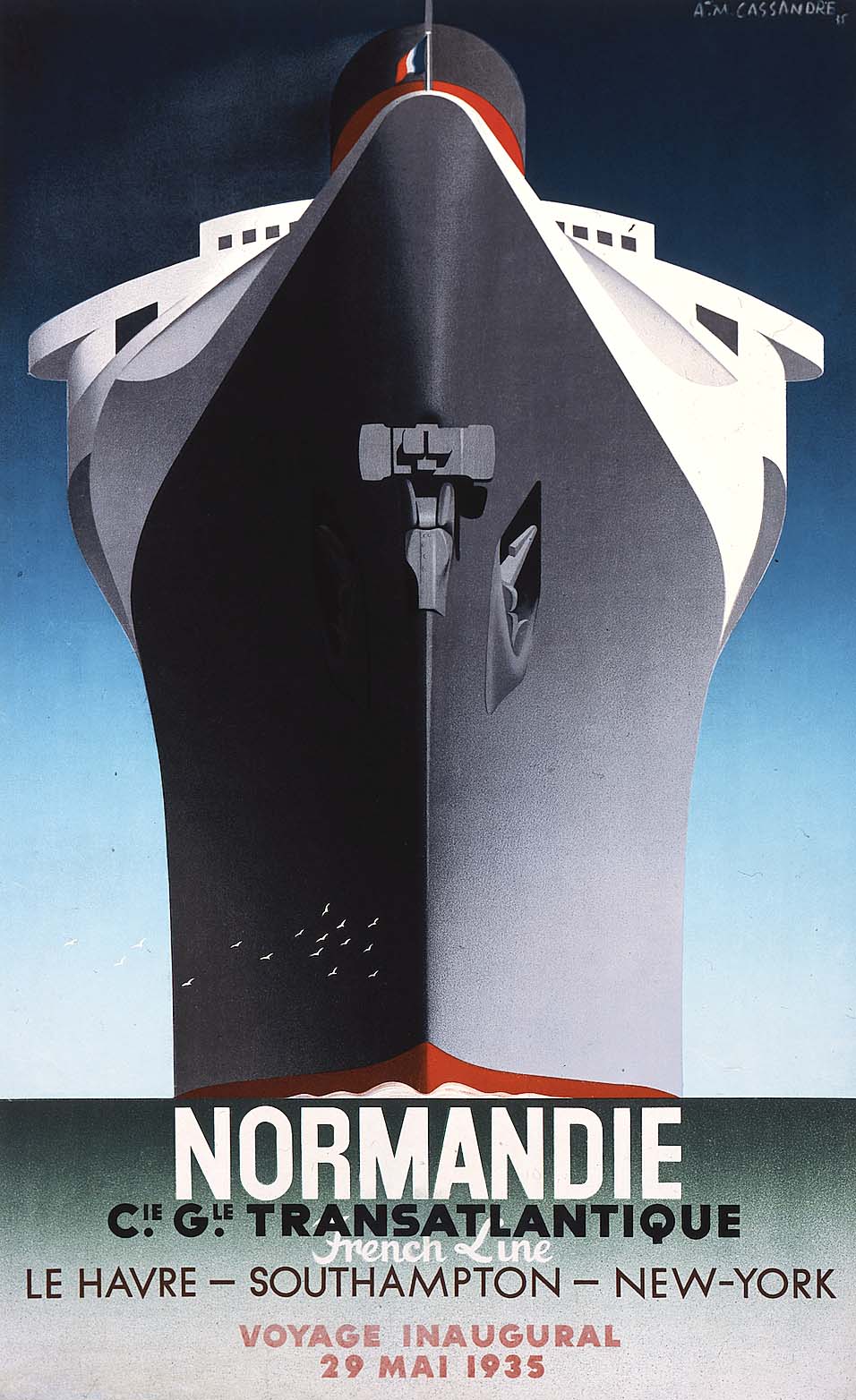
“Normandie: Voyage Inaugural” by A.M. Cassandre (French, 1901-1968), 1935, lithograph, 39¼ by 24½ inches. Collection of the Crouse Family, courtesy of Poster House.
While many people suffered financially during the Great Depression, there was still a group of affluent buyers who could afford luxury travel, which was a burgeoning industry at this time. A.M. Cassandre’s famous and streamlined 1935 poster for the inaugural voyage of the Normandie ocean liner remains one of the most recognizable posters from this period. Deceptively simplistic in its design, Cassandre aptly emphasizes the power and size of the ship with the viewpoint showing the ship’s hull looming in front of the viewer.
“In these posters created in the 20s and 30s, we can start to see the shift in the zeitgeist and how changing technologies as well as needs and demands started to influence how these incredible graphic designers created these images that responded to the changing time period,” Yoon said.
These posters not only marketed particular products but subliminally influenced passersby to become consumers, suggesting they may adopt admirable lifestyles if only they smoked the right cigarettes, wore the right perfume or drove the right car.
A fitting example is a poster created for Berlin’s Jewelry Week exposition in 1932 by N. Weber, “Trage Schmuck du Gewinnst,” which translates to “Wear Jewelry, You Win.” The airbrushed poster has a seductive appearance in the female figure, whose identity is ambiguous and shadowed. Is she a model or perhaps a mannequin? Whoever she is, she is well adorned with a wealth of fine jewelry, including a snake-like bracelet that wound itself around her serpentine-like arm. Berlin and Paris were two of the most vibrant European cities during this era, Yoon said. “They offered incredible nightlife and parties… You were there to see and be seen, and one way to do that was by decorating yourself with jewelry,” she explained.
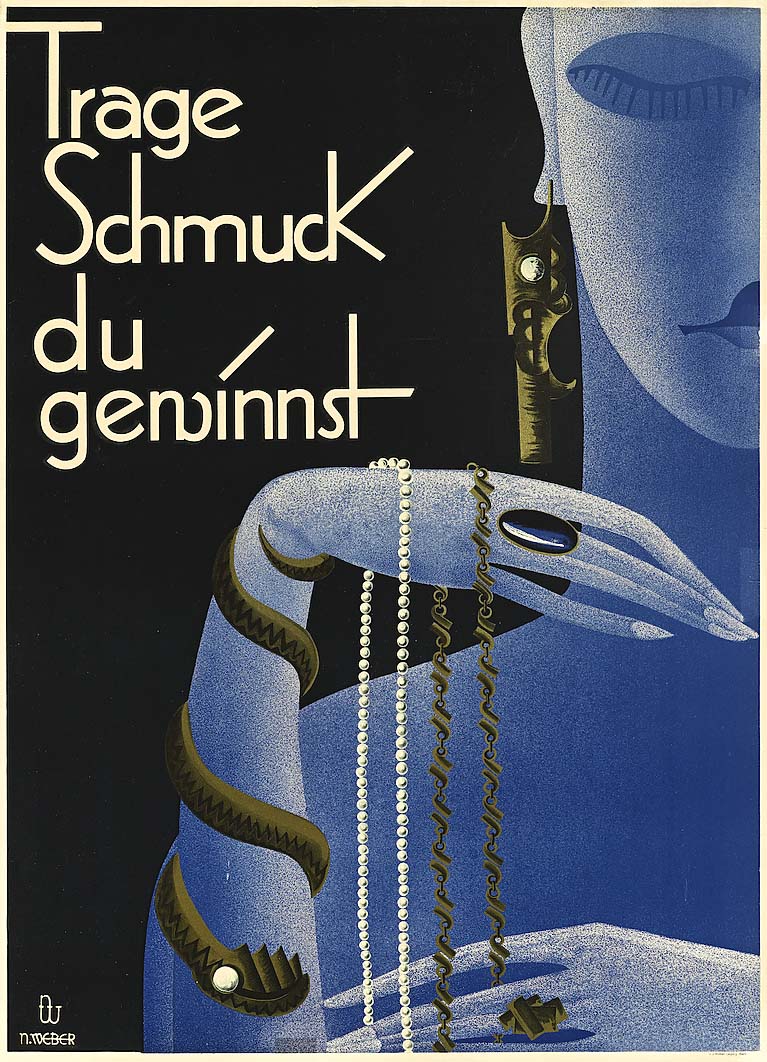
“Trage Schmuck du Gewínnst (Wear Jewelry, You Win)” by N. Weber, 1932, lithograph, 35⅜ by 23½ inches. Collection of the Crouse Family, courtesy of Poster House.
Dubbed the Golden Age of Illustration, the Art Deco era was known for glamour. Artistically, the natural and organic-infused stylings of the Art Nouveau were replaced with bold typography and colors, streamlined geometric designs and high contrast. Among the sports-related posters evoking this aesthetic is a colorful and highly stylized Hungarian-language poster by Károly Gerster (1859-1940) highlighting when the Grand Prix race was in Hungary, the only time it took place before World War II. The “Budapest Grand Prix” poster from 1936 dynamically conveys the danger and thrill of racing with a dramatic low angle showing the car racing towards the viewer. Gerster also shows the pride Hungary had in hosting such an event, evinced by the sunburst-like national flag fluttering in the top left corner of the image.
Artist Paul Colin created an unusual design, atypical from his usual theater posters, for a Paris optician with his 1938 poster, “Leroy, Premier Opticien de Paris,” showing a man trying on a pair of glasses. What makes this poster work is the large lettering on the bottom being blurred so as to fake out passersby that they too might need to get glasses.
Collecting for more than 40 years, the Crouses have sophisticated tastes and many of the posters originate from Continental Europe. A notable exception are two vibrant tourism posters for Australia designed by German-Australian artist Gert Sellheim. One touts the great Barrier Reef as a travel destination, showing three small islands each topped with a palm tree above three angelfish swimming in a dark blue ocean separated by vertical strands of seaweed. The design is as meticulously arranged as it is aesthetically pleasing.
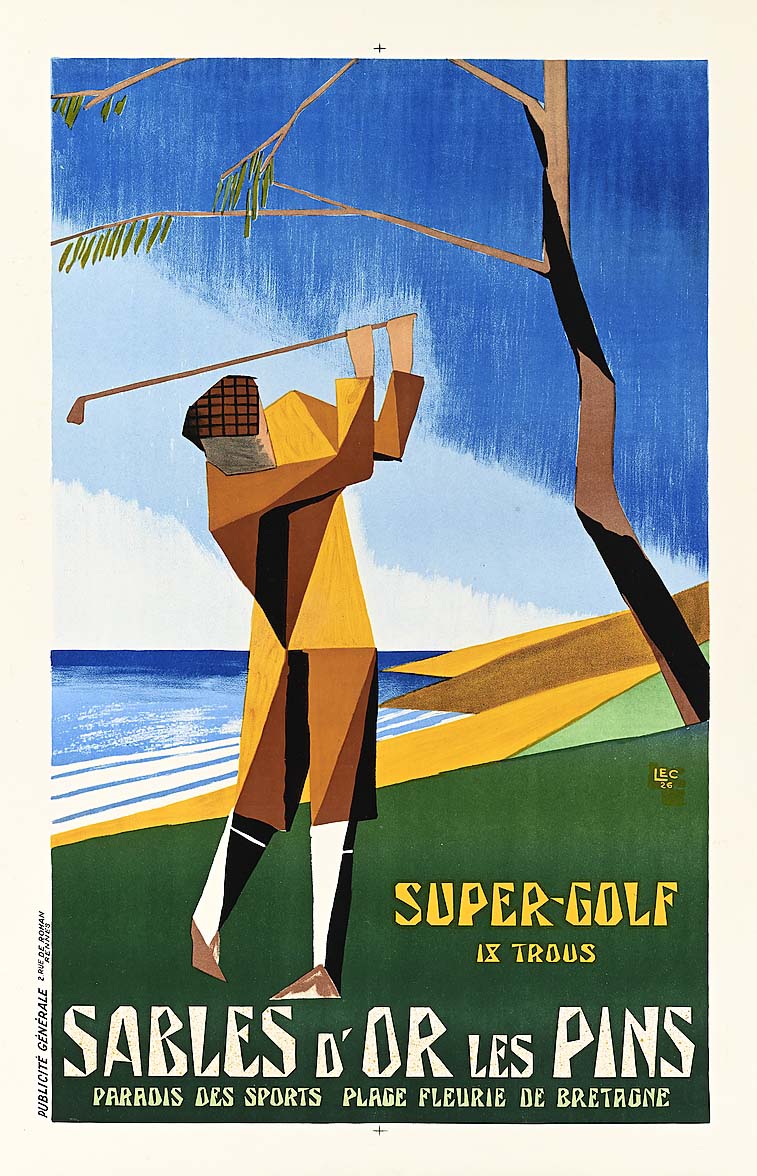
“Sables d’Or les Pins” by unknown artist, 1926, lithograph, 39 by 25 inches. Collection of the Crouse Family, courtesy of Poster House.
In addition to the posters, the exhibition is enhanced with a grouping of Art Deco-era sculptural objects and vintage cocktail shakers from the Crouses along with furniture from the Wolfsonian-Florida International University in Miami. This selection demonstrates not only the streamlined aesthetic of this era but also the variety of fine materials and finishes like exotic woods, stainless steel, chrome and glass that designers utilized. The blending of industrial production techniques with high artistic design ensured the Art Deco movement remains an influential chapter in the history of design. Its influence can still be seen today in contemporary works.
Yoon thinks audiences will be surprised by how eye-catching these posters are, but she hopes they look closely at the posters to realize how successful they were in their messaging to influence people to become consumers. “There is a lot to read in these images and I think audiences will be really fascinated by the visual efficacy and how relevant and still so fresh and contemporary they look,” she said.
Sarasota Art Museum is at 1001 South Tamiami Trail. For more information, 941-309-4300 or www.sarasotaartmuseum.org.
